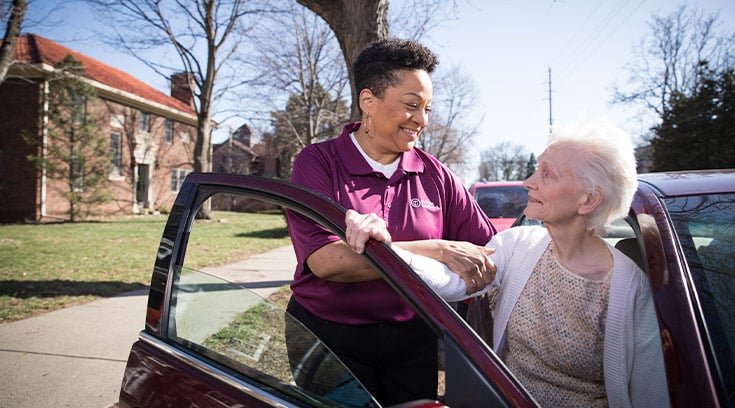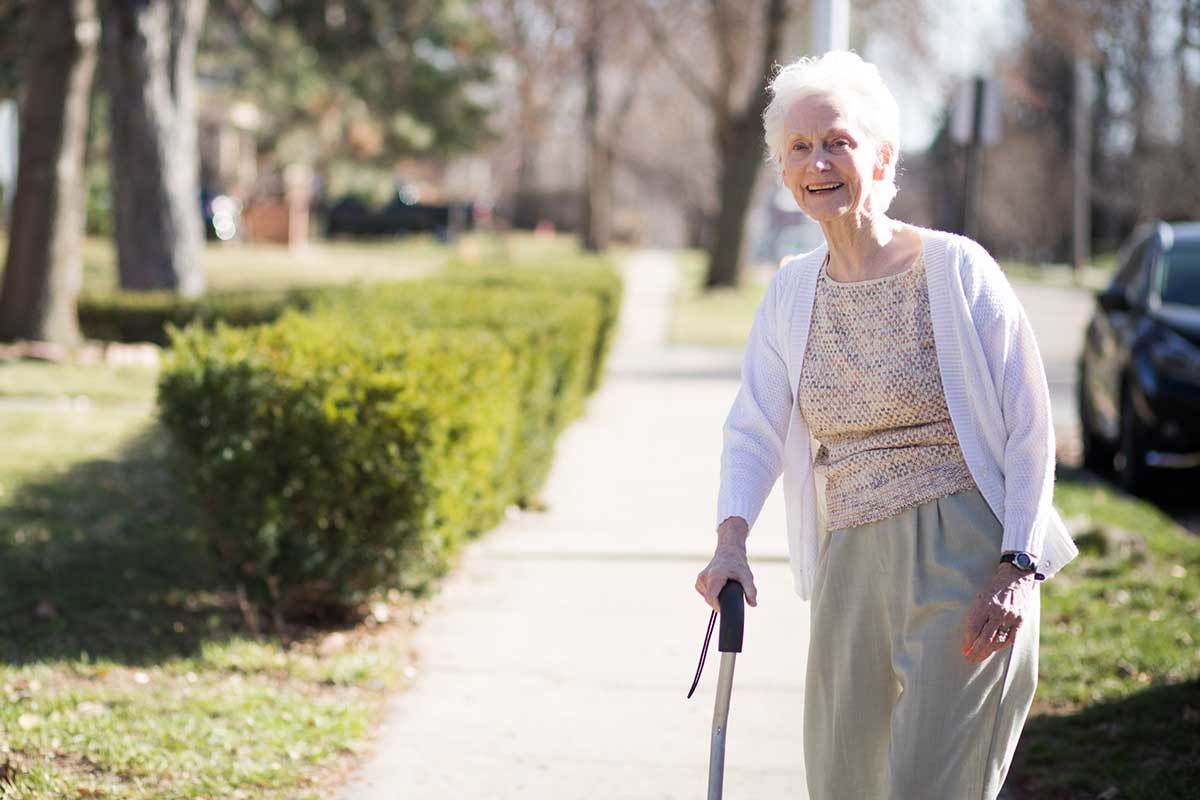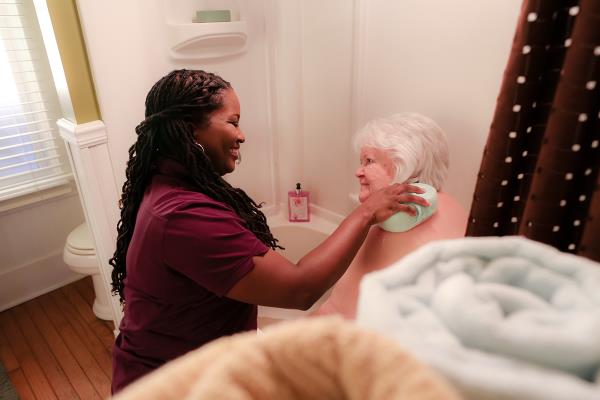Keeping an older adult's mind and body active and healthy can not only prevent frailty, but in some cases, reverse it. Family caregivers assisting seniors play a key role in helping them figure out which activities are enjoyable and beneficial. Use the suggestions below to become more mindful of incorporating activities to enrich all aspects of an aging loved one’s life.
If you or a loved one has a regular route to the grocery store or mailbox, try changing it up to exercise the brain.
Try drinking tea in the morning instead of coffee. If you’re reading the newspaper in the morning and watching television in the afternoon, try switching them around. Make a note of what you and your loved one like and don’t like about the new order.
Use the opposite hand to open doors and brush teeth. Wear a watch or bracelet on the opposite hand. These activities will help the brain re-think daily tasks.
Remembering and memorizing song lyrics is a great way to keep the mind active. How about "Moon River," the hit made popular in the 1960s by legendary crooner Andy Williams? Here are a few others from the 1940s, ‘50s and early ‘60s that your loved ones might remember:
- "Chances Are" (Johnny Mathis)
- "Blueberry Hill" (Fats Domino)
- "When You Wish Upon a Star" (Cliff Edwards)
- "You Send Me" (Sam Cooke)
- "Wake Up Little Susie" (The Everly Brothers)
- "Sentimental Journey" (Doris Day)
- "Fly Me to the Moon" (Frank Sinatra)
Sing as you’re going about the day.
Doing jigsaw puzzles and word puzzles like crosswords and Sudoku are great ways to help keep the mind active while having fun. Borrow a new puzzle each week from the library and add a word puzzle book to the next grocery list.
Playing card games or other board games can garner a laugh and companionship all while giving the brain a workout. Try a new game like Crazy 8s, Rummy, Solitaire, Bingo or Cribbage every few days.
Don’t forget online brain games or apps. Check out these suggestions.
Having the strength to grip can impact the everyday lives of aging adults. This squeezing exercise with a tennis ball can be done while watching TV.
Hold a tennis ball or other small rubber/foam ball in one hand.
- Slowly squeeze the ball as hard as you can and hold it for 3-5 seconds.
- Relax the squeeze slowly.
- Repeat 10 – 15 times.
- Repeat 10 – 15 times with the other hand.
- Do the exercise twice on each hand.
Incorporate this skill by opening a jar of pickles or olives. Or suggest playing fetch with the dog. Keep hands and fingers limber by folding towels or the laundry.
This activity helps strengthen thighs and may reduce symptoms of arthritis of the knee.
- Sit in a sturdy chair with back supported by the chair. Only the balls of feet and toes should rest on the floor. Put a rolled bath towel at the edge of the chair under the thighs for support. Breathe in slowly.
- Breathe out and slowly extend one leg in front as straight as possible, but don't lock the knee.
- Flex the foot to point toes toward the ceiling. Hold that position for 1 second.
- Breathe in, slowly lowering the leg back down.
- Repeat 10 – 15 times.
- Repeat 10 – 15 times with other leg.
- Do the exercise twice on each leg.
As muscles strengthen, add ankle weights. Walk from one end of the house to another or, if the weather is nice, take a jaunt around the block, through the mall or to the gym!
The Leg Curl is designed to help make walking and climbing stairs easier. Strong legs can help older adults avoid falls. In addition to building up strength, use this home safety checklist to avoid falls.
- Stand behind a sturdy chair, holding on for balance. Lift one leg straight back without bending the knee or pointing the toes. Breathe in slowly.
- Breathe out, slowly bringing the heel up toward the buttocks as far as possible.
- Bend only from the knee, keeping hips still. The leg you are standing on should be slightly bent.
- Hold position for 1 second.
- Breathe in, slowly lowering the foot to the floor.
- Repeat 10 – 15 times.
- Repeat 10 – 15 times with the other leg.
- Do the exercise twice on each leg.
This mobility activity can be made easier for older adults with eyesight problems if a caregiver describes the actions.
- Hold a beach ball at chest level in both hands.
- Stretch arms out straight.
- Then pull arms back to the chest.
- Repeat while counting to 10.
Put this skill to work while doing something enjoyable like watching TV or listening to the radio.
It doesn't have to be summer, and you don't need a big plot of land, to get the feel for gardening. Container pots are easy and fun any time of year.
Fill a clay strawberry pot with potting soil and then fill the openings with favorite herbs. Place in full sun. Check the pot daily and water accordingly.
You can bring some herbs indoors for the colder winter months as long as they have adequate sunlight. This means a southern exposure ideally with about eight hours of sunlight a day. Added bonus: fresh herbs are a delicious and healthy way to add flavor to favorite recipes.
Check out old photo albums. Going through the pictures will undoubtedly jog everyone’s memory and prompt a few stories. While you're looking through those old pictures, let imaginations and memories run wild.
Spend time writing down all the stories next to the photos. Aging adults and family member will treasure them in years to come. For someone living with dementia, capturing these memories is even more meaningful.
Think about items of interest that have been collected through the years. Many seniors have stashed away old coins or stamps or baseball cards. How about costume jewelry from the 1940s or ‘50s?
Perhaps pieces of the collection are scattered around the house. Make it a treasure hunt to find all the items.
Next, decide where to store this collection. Depending on what’s been gathered or collected, it may need a lot of room or a special place that will help preserve the items. Think about different ways to display these treasures. If a loved one decides to collect valuable items, such as baseball cards, he or she may need to consider a safe deposit box at the bank.
Or you could begin a collection that could be passed down through the family. Need help? Start collecting by visiting garage sales, looking for the items while traveling or researching on the internet.Compassionate Home Care




